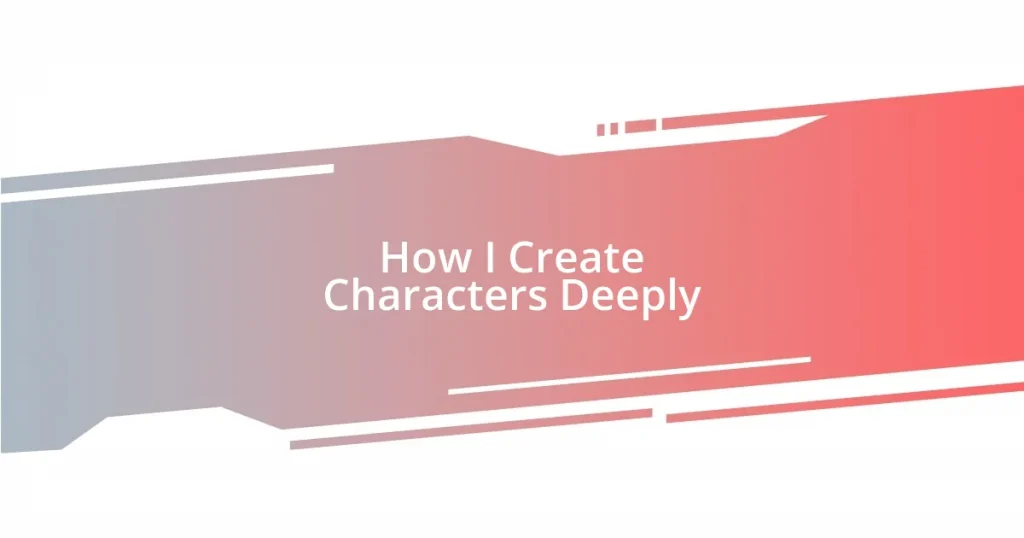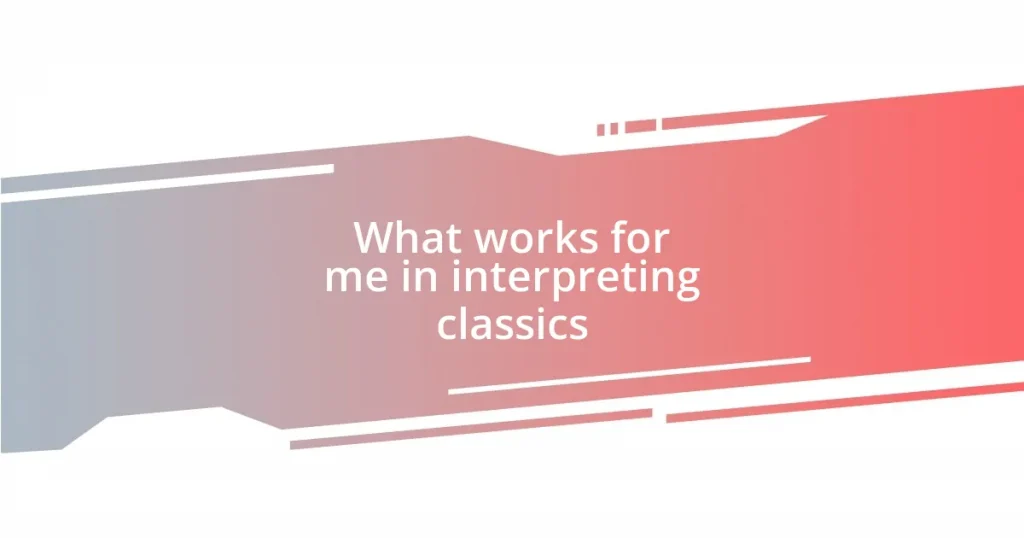Key takeaways:
- Effective character development involves understanding motivations, flaws, and backstories to create relatable and complex characters.
- Character arcs reflect growth and transformation, often mirroring personal experiences and lessons learned by the writer.
- Building character relationships adds depth and can showcase themes of trust, forgiveness, and personal growth.
- Revising characters is crucial for revealing deeper layers and ensuring authenticity, supported by feedback from readers.
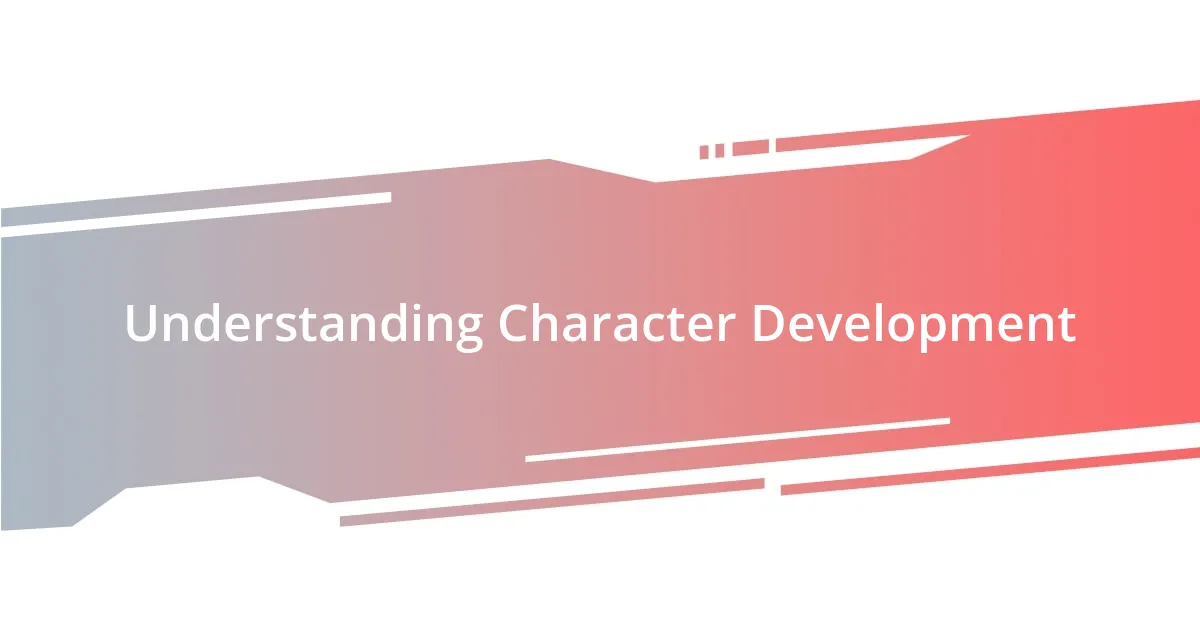
Understanding Character Development
Character development is more than just a backstory; it’s about crafting a journey that resonates emotionally with the audience. I often ask myself, “What drives my character? What fears or desires shape their choices?” For instance, when I created a character haunted by a past mistake, I drew from moments in my life where I felt similar guilt. It made their struggle palpable, almost like I was reliving those emotions.
To truly understand a character, I believe it’s essential to explore their motivations deeply. I’ve found that creating a character’s goal often unveils layers I didn’t initially consider. Whether it’s yearning for acceptance or striving for revenge, these motivations breathe life into them. Have you ever wondered why certain characters stick with you long after you’ve closed the book? It’s likely because their desires mirror those we grapple with in real life.
Building relatable flaws also plays a crucial role in character development. I remember when I wrote a character who was overly ambitious, sacrificing relationships for success. I reflected on times I’d put my own goals ahead of my loved ones. This allowed me to create a multi-dimensional character that readers could empathize with, sparking a conversation about ambition and its costs. What kinds of flaws draw you in?
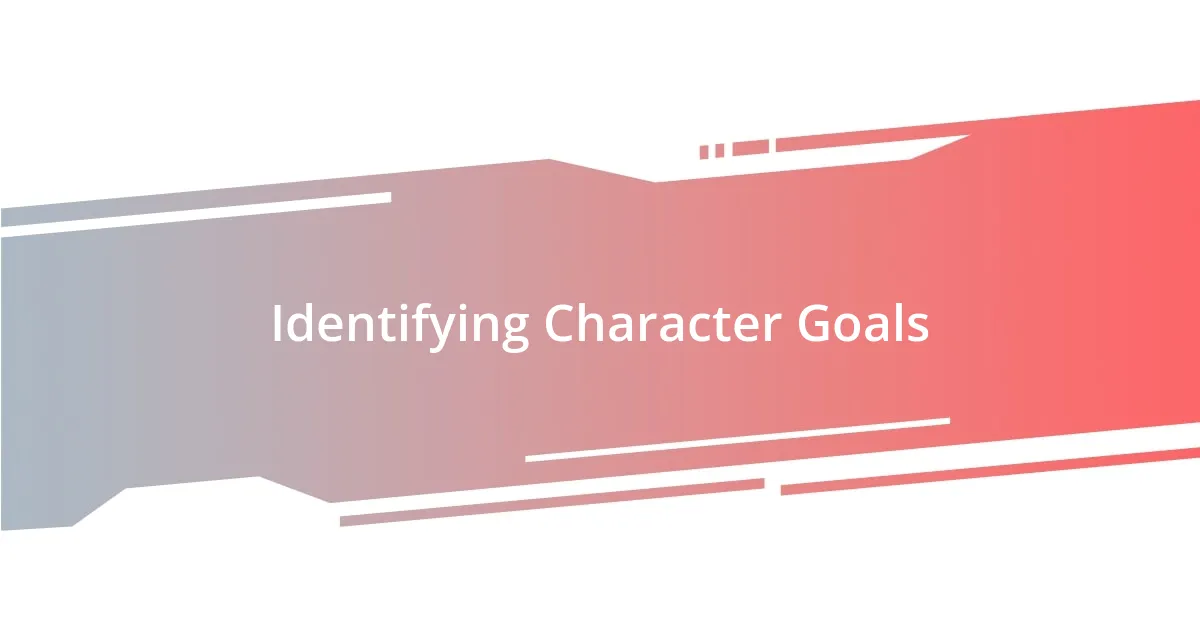
Identifying Character Goals
Identifying what drives a character is a fascinating yet intricate part of the creative process. When I worked on a novel featuring a character who was a single parent, their goal was not only to provide a stable environment for their child but also to reclaim their own dreams. This duality added complexity, as I recalled the times I juggled personal ambitions with responsibilities. Engaging with these insights helps the character feel more authentic and relatable.
- Consider what your character desires most at the beginning of the story; this goal should dictate their actions and reactions.
- Reflect on any past experiences that shaped this desire—did they lose something valuable or experience a failure?
- Think about obstacles they will face as they pursue their goal; these challenges can reveal their resilience or flaws.
- Ensure their goal evolves throughout the story—characters should grow in response to their journey and experiences, mirroring real-life changes.

Building Character Backstories
Building character backstories is a rewarding yet challenging endeavor. I always find it crucial to think about how a character’s past shapes their identity. For instance, when I created a character with a troubled childhood, I remembered how certain experiences from my own past influenced my path. This connection not only filled the character’s backstory with depth but also allowed readers to understand their complexities.
One approach I frequently use is to ask myself, “What pivotal moments defined this character?” A character who faced betrayal might be wary of trusting others, and that trait becomes a defining aspect of their personality. In my writing, I’ve drawn from times in my life where trust was broken, and I channeled that into my character’s interactions, revealing how their experiences color their decisions.
I also emphasize the significance of relationships in a character’s backstory. Reflecting on my friendships, I’ve found that they often mirror the ties my characters have with others. A character who lost their best friend might struggle with loneliness, making their journey one of healing. By weaving such narratives, I create a richer tapestry that not only captivates readers but also resonates with their own experiences.
| Character Element | Significance |
|---|---|
| Childhood Experiences | Shapes personality and identity |
| Pivotal Moments | Defines motivations and fears |
| Relationships | Influences actions and emotional growth |

Crafting Unique Character Traits
Crafting unique character traits requires digging into the nuances of what makes individuals truly interesting. I often think about how a simple quirk—a character who hums while cooking or keeps a collection of vintage lunchboxes—can breathe life into a narrative. By considering my own little habits, I realize that these unique traits can spark relatable moments in a reader’s mind, prompting them to reflect on their experiences.
One technique I love is blending contrasting traits. For example, a character who is outwardly confident yet secretly struggles with anxiety creates intrigue. I once wrote a character whose bravado hid a deep-seated fear of failure. It reminded me of a time I stood in front of an audience, masking my own nerves with a smile. Such layers not only draw readers in but also spark question: What lies beneath the surface of someone you think you know well?
I also believe that traits should reflect a character’s journey. I remember crafting a character who began as a cold, calculating antagonist, but as the story unfolded, they revealed a softer side shaped by loss. This evolution mirrored my own experiences, where tough situations forced me to reconsider my priorities. By allowing characters to grow and shift, I ensure they resonate with readers, who can see parts of themselves within those transformations.
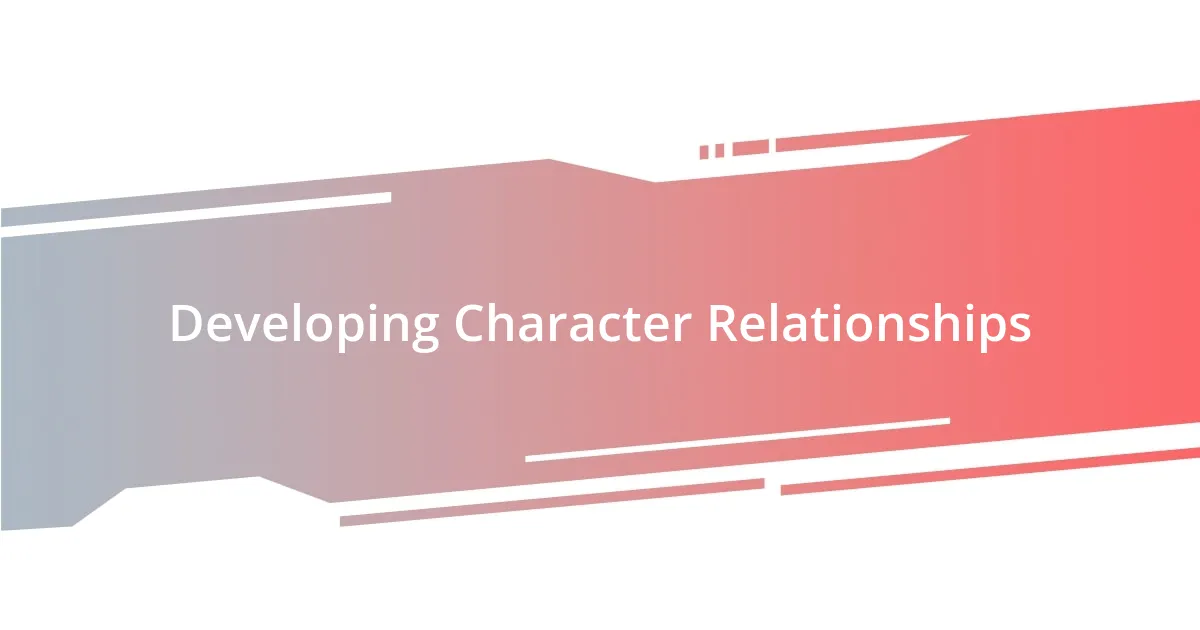
Developing Character Relationships
Developing character relationships can significantly enhance the depth of a story. I often reflect on my own friendships; they teach me so much about trust, forgiveness, and rivalry. For instance, I once had a close friend who became distant due to a misunderstanding. This experience helped me shape a poignant relationship in my writing where two characters navigate the complexities of miscommunication, revealing how fragile trust can be.
When I think about character dynamics, I dive into how their relationships can evolve. I’ve noticed that moments of conflict often lead to unexpected connections. I remember a character of mine who clashed with another not just because of differing beliefs, but due to unacknowledged jealousy. This emotional turmoil created a rich opportunity for character development, as they ultimately had to confront their feelings to move forward. Have you ever experienced a shift in a relationship that changed everything? Those moments can spark profound growth.
Mutual growth in relationships is something I strive to illustrate. I created a friendship between two characters that reflects the mentorship I’ve felt in my life. One character is a free spirit, encouraging the other to embrace spontaneity despite their structured life. Their exchanges bring joy as they navigate obstacles together, reminding me of how powerful it is to have someone challenge you to step out of your comfort zone. By weaving these types of connections, I aim to show readers how relationships can be transformative, deepening not just characters but the narratives surrounding them.
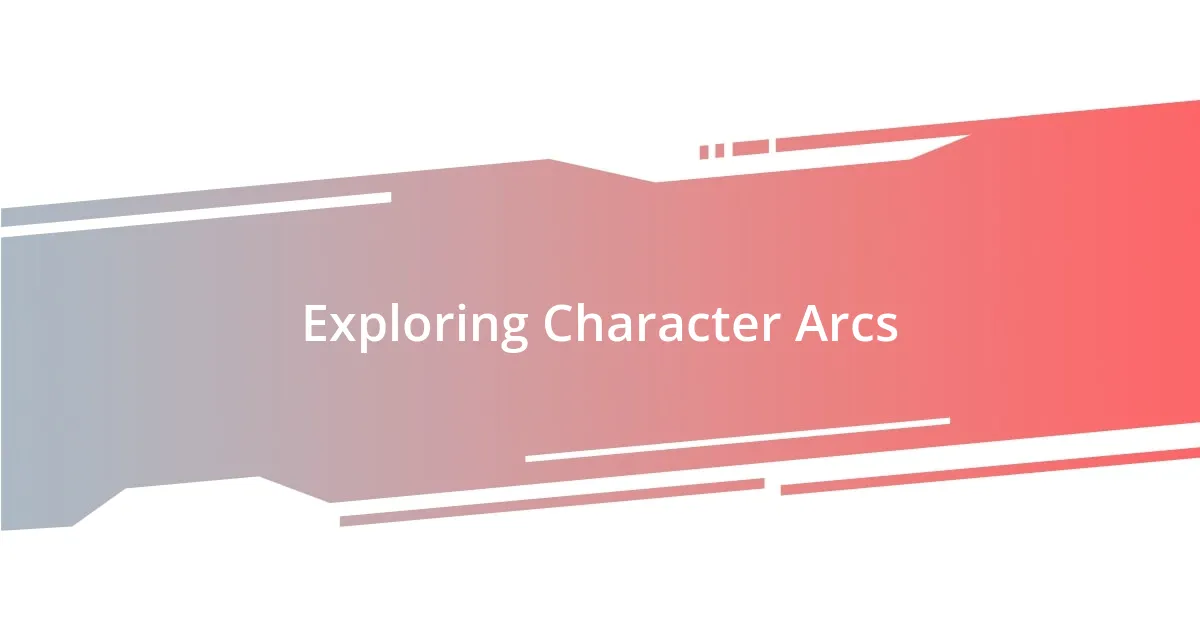
Exploring Character Arcs
Exploring Character Arcs
Character arcs are fascinating because they illustrate growth and change. I often find myself reflecting on how my favorite characters evolve. For instance, I remember a novel I wrote where the protagonist began as a selfish individual but, through a series of trials, learned the value of community. It was a cathartic experience to put myself in their shoes and question how I would respond in similar situations. How often do we witness transformation in ourselves or those around us?
In creating character arcs, I pay close attention to the key events that shape a character’s journey. Think about pivotal moments that have influenced your life—perhaps a sudden loss or a surprising revelation? I had a character who faced betrayal; it forced them to reevaluate their priorities. This moment was inspired by my own tough decision when I had to cut ties with someone toxic. Experiencing their internal struggle helped convey authentic emotions that resonate with readers.
The beauty of character arcs lies in their ability to connect deeply with human experience. I imbue characters with flaws that mirror my own, driving their development toward resolution. For example, I crafted an impulsive character whose journey taught them the importance of patience. This reflects my struggle with impetuous choices in my early twenties. By showcasing this growth, I can challenge readers to ponder: What lessons have you learned from your own missteps? It’s these shared experiences that make character arcs not only engaging but also deeply relatable.
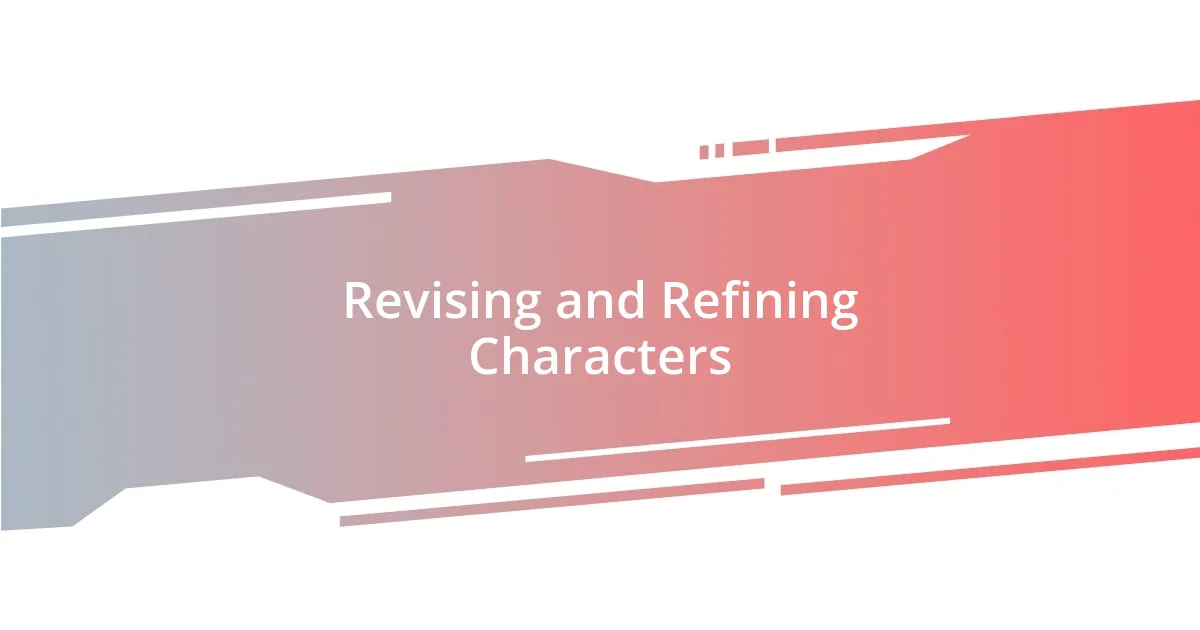
Revising and Refining Characters
Revising characters is where the magic truly happens for me. I’m often surprised at how much my initial drafts reveal about the characters, only to find layers that need peeling back. I once revisited a character who felt too one-dimensional; as I explored their backstory deeper, I discovered a childhood filled with fragile dreams that had been shattered. This connection to their past enriched their motivations, making their journey all the more poignant.
As I refine my characters, I ask myself stirring questions about their inner lives. What fears hold them back? What aspirations drive them forward? In one instance, I realized a character’s cutting humor was just a facade masking their fear of vulnerability. I had a similar fear early in my career; I avoided showing weakness, thinking it would make me less credible. By giving this character the chance to confront their ultimate fear, I noted a significant turning point, enhancing their depth and relatability.
I also lean on feedback from trusted readers during the revision process. Their insight often shines a light on nuances I might overlook. I remember a beta reader pointing out that a character’s motivations seemed inconsistent. This prompted deeper reflection on the traits I had instilled in them. I revamped their goals to align better with their established personality, transforming them into a character who not only feels authentic but also resonates with anyone who has grappled with doubt and determination. How do you feel about receiving feedback? I find it can be incredibly revealing and therapeutic.










